
MODULE 7 - LOCATING ELK
CHAPTER 1: FINDING THE NEEDLE IN THE HAYSTACK

Elk live in a wide array of terrains, climates, elevations, and habitats. It would be impossible to suggest one common attribute of geography where you could consistently find elk. They range from the seashores of the Pacific Ocean, to high above timberline in the Colorado Rocky Mountains, and virtually every elevation and ecosystem in between. They inhabit hot, dry pinion/juniper country in the southwest, and the coastal rain forests of the northwest. Throw in the classic elk country of the Rocky Mountain range, and you will find elk living in just about every habitat imaginable…and some that isn’t even imaginable! If just locating elk during the season was easy, success rates would be a lot higher than they are! The way that you locate elk is going to depend on several factors, including terrain and habitat, the season you are hunting, and your personal hunting style.
TERRAIN AND HABITAT
“Elk Country” varies greatly depending upon region and elevation. Elk can literally be found from the low deserts of New Mexico and Arizona, to the highest peaks of Colorado and Wyoming – and anywhere and everywhere in between. To help cover all of these differing landscapes, I’ll break elk hunting terrain down into three sections: Alpine, Mid-Slope, and Lowlands.
Alpine habitat consists of the high mountain meadows and parks typically found above tree line (think high country in Colorado and Wyoming). The Alpine will generally be more open country with isolated timber pockets and timbered or brushy draws. The feed in these areas is predominantly lush, green grass and low lying brush. Alpine areas are typically steep in nature with scattered benches, high mountain lakes, and dominant ridge lines separating sub-basins and draws.
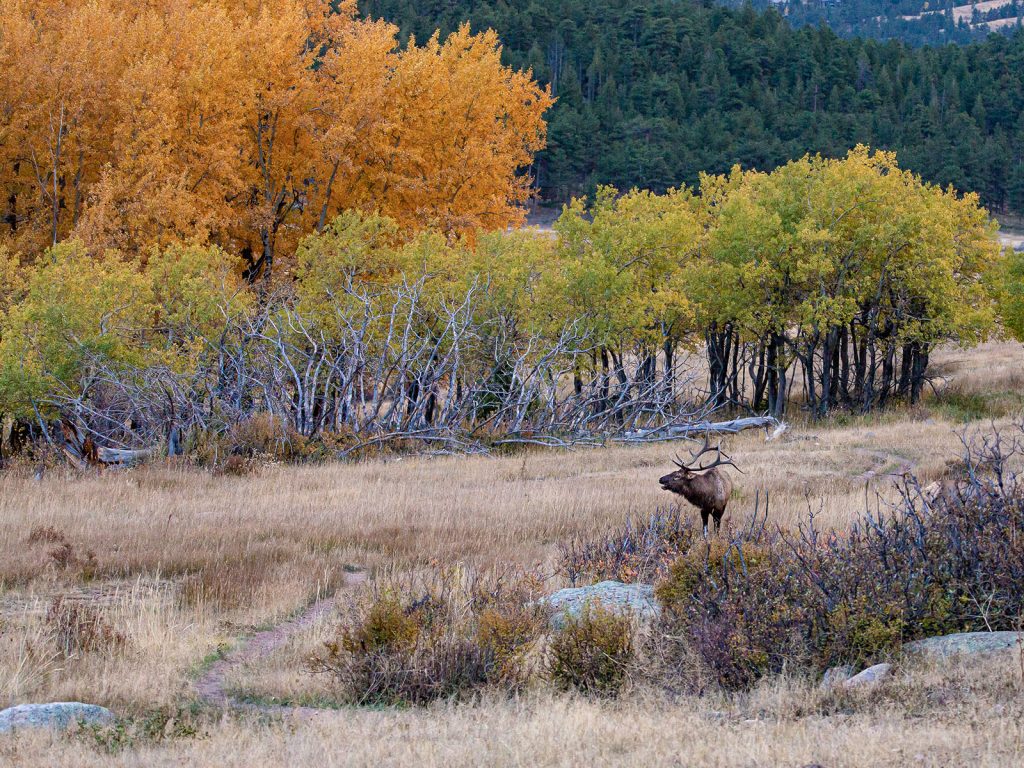
Mid-Slope habitat connects the high Alpine areas to the Lowlands. These areas range from the classic aspen and pine elk country to thick timber/brush with less open country. Mid-Slope areas provide excellent cover and security for elk, and the open ridges and small meadows and parks typically provide excellent feed sources as well. The terrain in these areas can vary from very steep, to more gentle, rolling hills and foothills.
Lowlands are typically the lowest elevation habitat within a given area. Many times this area consists of meadows or brushy bottoms, but typical lowland elk country is made up of sagebrush and pinion/juniper terrain. Water is often the primary limiting factor in these low elevation ecosystems.
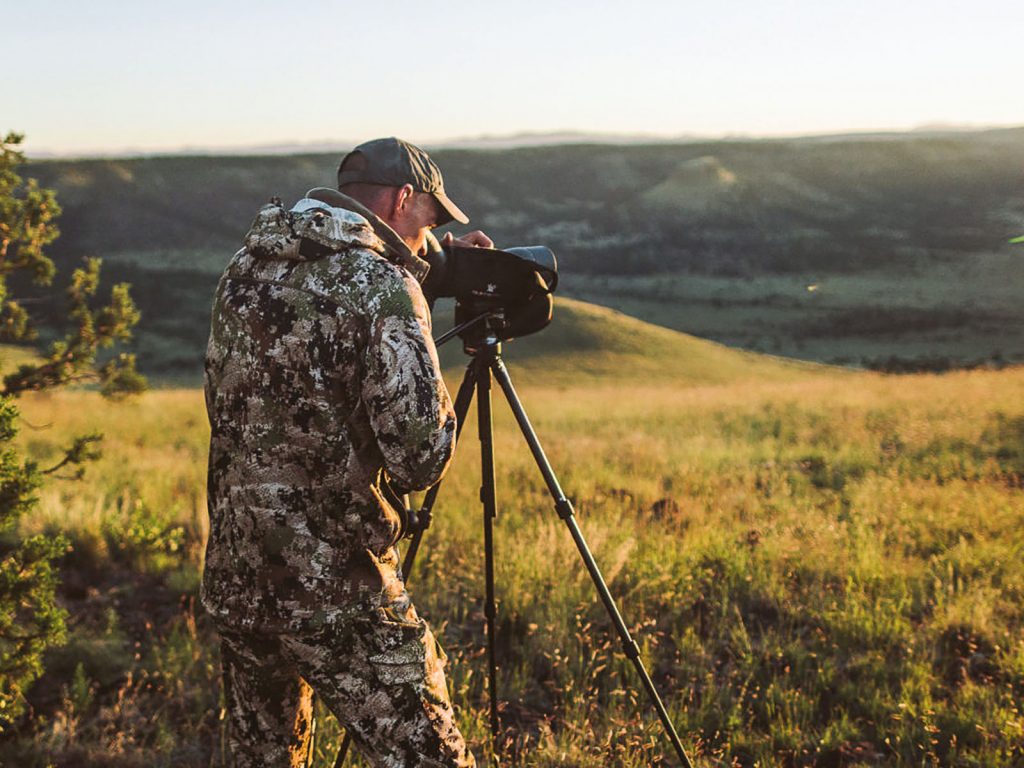
Even though elk are large herd animals, it can seem daunting and almost impossible to locate them at times, even when you know they are close by. By understanding how the terrain will affect their feeding and watering behaviors, bedding routines, and rutting activities, you can narrow down your search and make more educated decisions on precisely where you will be able to locate the elk.
In every habitat, elk need food, water, and security (bedding areas). I provided some detail on these factors in Module 2: Scouting For Elk. Knowing where these key elements are found within the habitat you are hunting is critical. I remember my first experience hunting outside the familiar elk country of my home state of Idaho. I had gotten pretty good at recognizing areas where I felt I could readily find elk close to home, but when I traveled to the desert climate of Arizona, that confidence quickly went out the window.
Bedding areas there were drastically different than what I had been used to, and elk habits were driven more by finding water than finding security from predators and hunters. What did that mean? It meant I had to completely adapt to this new terrain – and the elk’s needs within that terrain – and my hunting style and the way I located elk had to be modified as well. Here are a few things to keep in mind as you consider the three main elements elk need to survive, regardless of the terrain you are hunting.
FOOD
Elk need 20-25 pounds of various vegetation daily in order to maintain their weight. Elk are predominantly grazers and tend to do the majority of their feeding in the early mornings and evenings, and spend the majority of their days in the security of their bedding areas. The higher quality and most preferred food sources tend to be found near water and along open ridges and the adjacent south-facing slopes.
WATER
Elk require water for digestion and metabolism, reducing body temperature, and normal body function. Besides water sources, elk can obtain water from ingesting a variety of succulent green plants, as well as morning dew on leaves and grasses. During the summer and early fall months when the temperatures are high, elk can almost always be found within a half-mile of a water source. Creeks, streams, rivers, springs, ponds, and tanks (stock tanks or trick tanks) typically provide adequate water sources to support elk herds.
BEDDING/SECURITY
During the day, and often throughout the night, elk will bed down where they feel safe and comfortable. As you can imagine, these areas will differ greatly between the three habitats I’ve mentioned. But knowing where these areas of security are in the specific area you are hunting can prove to be incredibly valuable as you being your search for elk. All of the elk’s daily movements revolve around their bedding areas. They leave them to go to food/water in the evening, and they return to them to rest during the day. If you know where the bedding areas are, you can usually determine where they are going for food and water.
TERRAIN
Knowing the terrain, and where to find the needed elements within that terrain, is going to be critical when it comes to locating elk. Terrain is also going to affect the tactics you use to locate the elk. For example, relying on optics to locate elk is not going to be as effective in many Mid-Slope areas as it will be in more open terrain. Still-hunting might be a good method for a stealthy search in thick timber, but it’s not going to work that well in thick, noisy brush. And calling – my favorite method for locating elk – can be less effective in wide-open landscapes where you can cover miles of country with a good pair of binoculars or a spotting scope. I’ll go into more detail on tactics for locating elk in the next Chapter, but definitely consider how different methods might be more effective within certain terrains.
SEASON
Elk are mobile animals. Depending on the time of the year – and even the time of the season – the elk may need to migrate to find food, water, or security. This is going to affect where you find them, sometimes from day to day. In the early parts of the season (late-August through early October), the elk are primarily focused on the rut. They are usually found in their traditional rutting areas, but there are factors that can disrupt that from year to year (refer back to Module 6: Elk Hunting Knowledge). Traditional rutting areas can be found throughout all of the habitats described previously.
As late summer transitions into fall, weather patterns and feed sources become primary factors that can affect an elk’s location, and your ability to locate them. Early snow storms in the mountains can kick in a migration that will sometimes take elk up to 50 miles to their traditional winter grounds. Rather than feeding on lush, green grass and low lying browse, elk will transition their feeding habits to match available food sources, which might make them more visible in new areas.
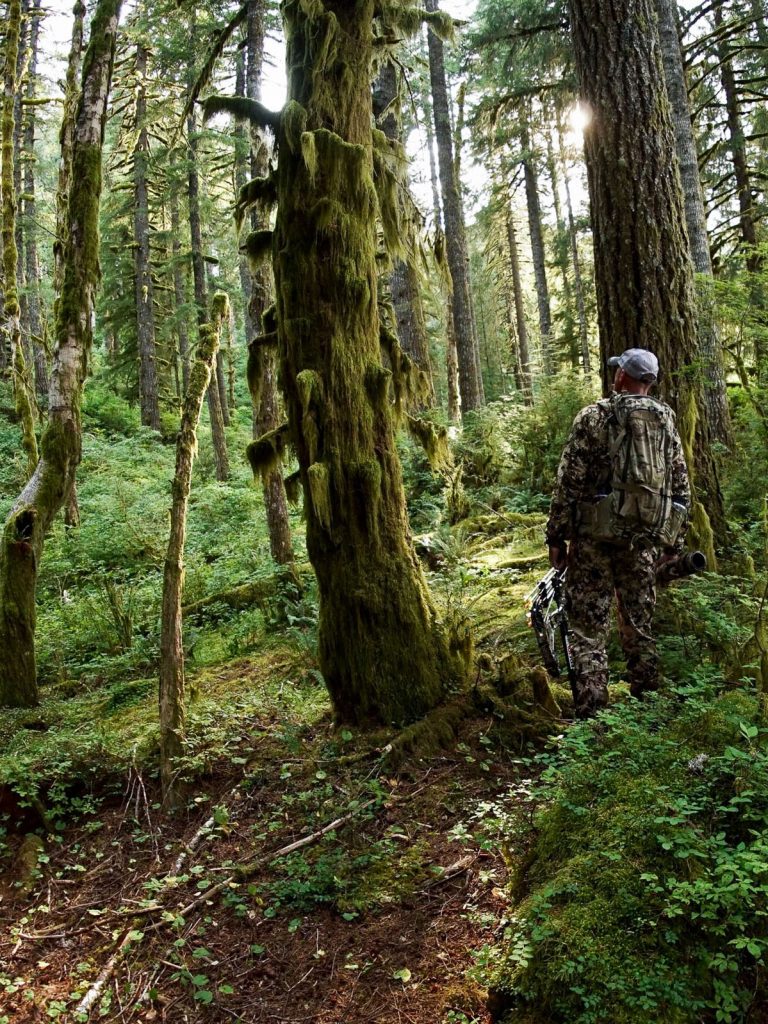
Additionally, they may not need to travel as far – or at all – to obtain water. Understanding how the season you are hunting can dictate the needs – and the location – of the elk, is critical.
HUNTING STYLE
Lastly, your hunting style is going to have a major impact on the methods you use to locate elk. If you are hunting elk in the Rocky Mountains of Montana in mid-September with a bow, there will be several options available for you to consider. However, if you are hunting a post-rut rifle season in the thick coastal country, you will likely be relegated to still-hunting. Unless you can find a good clear-cut, which will allow you to utilize optics as another option for locating elk.
Hopefully, you can see how different terrain and habitats within different seasons, and in conjunction with your personal hunting style, will affect the methods you use for locating elk.
ADDITIONAL CONSIDERATIONS
Regardless of the habitat, season, or weapon you are using to hunt elk, there are a few additional considerations that can drastically improve your ability to locate elk.
WIND
Let us not forget that at this point, we are hunting! That means that every action we take could have a very real consequence on the outcome of our hunt. It is vital that you pay attention to the wind as you are attempting to locate elk. I think many times we realize how important the wind is when we are moving in on elk or when we are close to elk, but it is equally as important when we are trying to locate elk. If you are set up glassing a clear cut that is below you and the thermals are blowing downhill, you might not see anything in that clear cut all evening. Similarly, if you are still hunting through open timber with the wind at your back, you might see a lot of fresh sign, but never stumble across an elk. And if you’re calling elk, you’ll find a lot more detail on the wind in the next two Modules.
BE MOBILE
In a nutshell, the more country you cover (whether by foot or by optics), the more opportunities you are going to have to locate elk. This doesn’t mean that you should recklessly run rampant throughout the area hoping to bump into an elk, but for the most part, the farther you go, the more elk you will encounter. This is true regardless of your method for locating elk. If you are glassing, find vantage points that provide you with multiple areas to glass. If you are still-hunting, cover country until you start seeing fresh sign, then slow down and hunt. And if you are calling, get on a ridge that will allow you to cover miles and broadcast your location bugles to multiple canyons and draws.
READ THE SIGN
Fresh elk sign means you are close. If you aren’t seeing fresh tracks, droppings, rubs, etc., you probably aren’t going to see a lot of elk. Elk leave evidence when they are in an area. Look for evidence of their existence, and learn to determine just how fresh the sign you find really is.
Bedding Areas
Elk spend about half of their life in their bedding areas. These areas will change from habitat to habitat, and from season to season, but they are generally fairly easy to locate. Keep your eyes open for elk-sized, leveled-out areas that are void of vegetation or identifiable by churned up dirt. Bedding areas that are “fresh” will usually emit a strong odor of elk, letting you know that elk have recently occupied this particular bedding area. Fresh tracks and droppings will usually be additional tell-tale signs that a bedding area is being used, and trails leading to and from these beds can provide valuable intel on where the elk are going to and coming from. For the most part, primary bedding areas will be found on the cooler, north-facing slopes, and usually between 1/3 and 2/3 the way up the mountain.
Tracks
Whether you are hunting dry, arid regions of sandy soil or lush, muddy creek bottoms and bogs, elk will always leave a track. Being able to identify travel routes and the age of the tracks, as well as the sex and age class of the animal that left the tracks, can definitely help in locating elk.
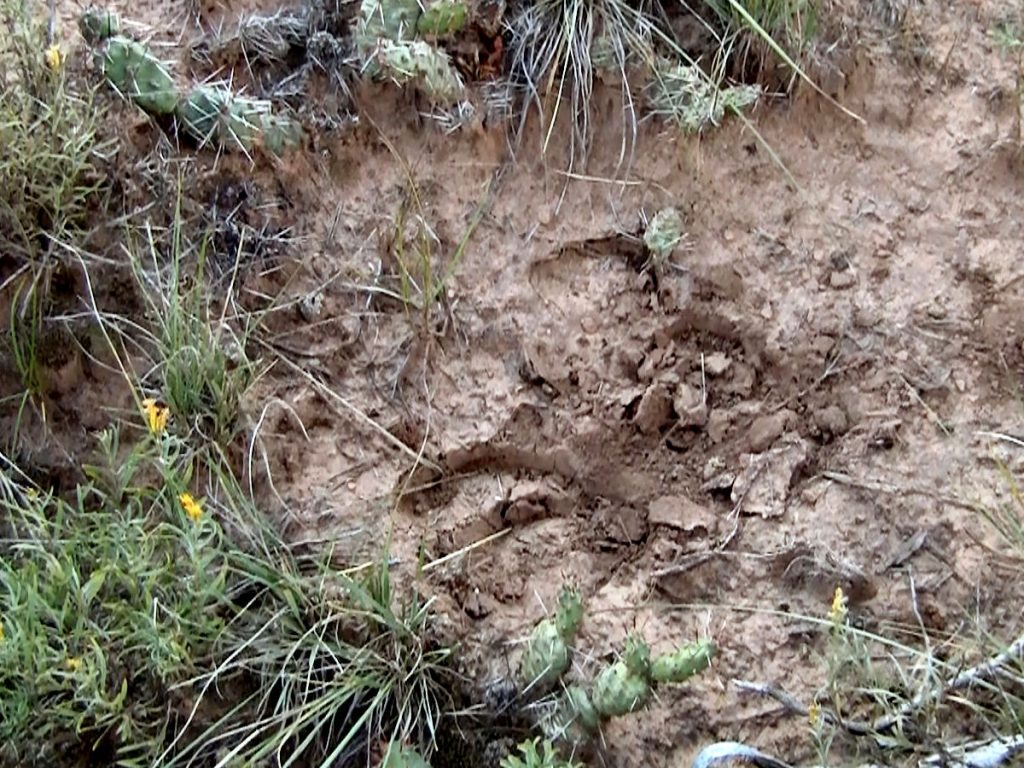
Elk don’t usually waste excessive time or energy unnecessarily. They follow patterns and instincts that are honed to keep them alive. Close examination of their tracks can often provide a wealth of information about their habits, as well as their use of the country they live in. Do the tracks meander from one bush to another while the elk browse? Are they on a straight path headed to a north-facing bedding area, or leading to a grass-filled mountain meadow for an evening meal?
Elk tracks typically indicate that you are somewhere along the path connecting the areas where elk feed, water, or bed. Additional characteristics of the tracks can further identify the what the elk where doing when they travelled through a particular area. Tracks that show scuffing, or upturned dirt and pine needles, might indicate the elk had been disturbed (was the wind blowing from you to them?) or were moving through the area at a quick pace. Deciphering tracks, combined with a knowledge of the area, can provide valuable clues about where you might find the elk throughout the day, and throughout the season.
Additionally, being able to accurately determine when the tracks were made is crucial. Fresh tracks usually leave the disturbed ground in a slightly different condition than the undisturbed ground next to it. For example, on dry soil, a fresh track will leave the disturbed dirt more “powder-like” than the surrounding soil. As that track grows older, the disturbed dirt will more closely match the condition of the surrounding dirt. Conversely, if the ground is slightly moist, fresh tracks can leave areas of upturned dry soil. Fresh tracks in pine needles will often have a damp look about them where the ground is disturbed, but will dry with age. As a rule of thumb, I always scuff my own boot next to the elk track to compare how my track differs from the elk’s.
Aside from providing critical clues about the habits of the elk, tracks can also help you determine the demographics of the elk that are frequenting the area. Close examination can tell whether there are bulls in the herd, as well as the general age class of the animals. Cow elk tracks can be easy to identify, especially if they have calf tracks accompanying them. The distinct contrast in the size of calf tracks compared to the cow track is a dead giveaway. By September, a three or four month old calf has a track similar in size to that of a large mule deer buck, or slightly larger. As the calves age, their tracks grow and the front (toes) of their hooves become less sharp. Mature cow tracks are larger, and the toe is not as sharp or pointed as those of younger cows.
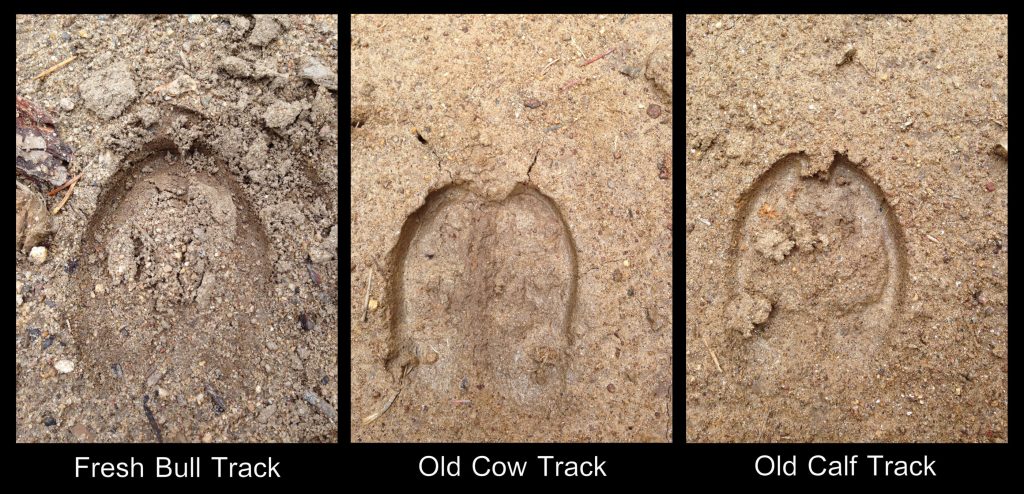
The tracks of younger bulls can be tricky to identify. Spikes and raghorn bulls will often have tracks that are very close in appearance to those of a larger, mature cow. However, by the time they reach 2-3 years of age, the hooves of a bull elk take a pretty significant jump in size. Most often, they will also be more blunt (rounded) than a cow track of similar size. By age four, bull’s hooves are distinctly larger than cow’s. They will be much wider and longer, and become quite easy to distinguish. An old, mature bull will have hooves that are as wide as they are long, and their cloven hooves will often spread apart more due to the increased weight of their body.
The freshness and size of elk tracks in an area can provide several clues about the habits of the elk, as well as the level of rut activity within a particular area. In early September, bulls emerge from their summer hideouts and begin roaming to look for cows. It isn’t uncommon during the early parts of the season to see large, single tracks along the edges of logging roads or on ridges and game trails. As the rut escalates and the bulls begin to establish their harems, their tracks can be found mixed in amongst the cows. Later in the rut, the lonely tracks of smaller bulls can be found wandering desperately as they are kicked out of, and chased away from, the herds.
Tracks, and the ability to distinguish bull tracks from cow tracks, can give a quick glimpse into the dynamics of the elk in a particular area. Especially in thicker areas that aren’t as conducive to glassing, tracks can provide many clues that will be helpful in determining where you will be most likely to find elk.
Rubs
There are two primary types of elk rubs: pre-rut rubs where the bulls shed their velvet, and rubs made during the rut (raking) as a show of aggression and dominance.
Testosterone levels in bull elk begins to spike as the rut approaches, which triggers the hardening of their antlers. This change prompts them to rub their antlers on trees and brush to shed the protective layer of velvet that has surrounded their antlers throughout the summer months. During this time, bulls have often separated from the bachelor groups and are hanging out alone in staging areas. These staging areas can often be identified by multiple rubs within a very small area (think a bull’s living room).
Later on, as the bulls begin establishing their harems, they will use their hardened antlers to rake trees and brush as a display of dominance and aggression. Finding a larger area that is speckled with several rubs would be a good indicator of a prime rutting area. However, finding a small area with several month-old rubs might not be all that valuable in finding the elk right then.
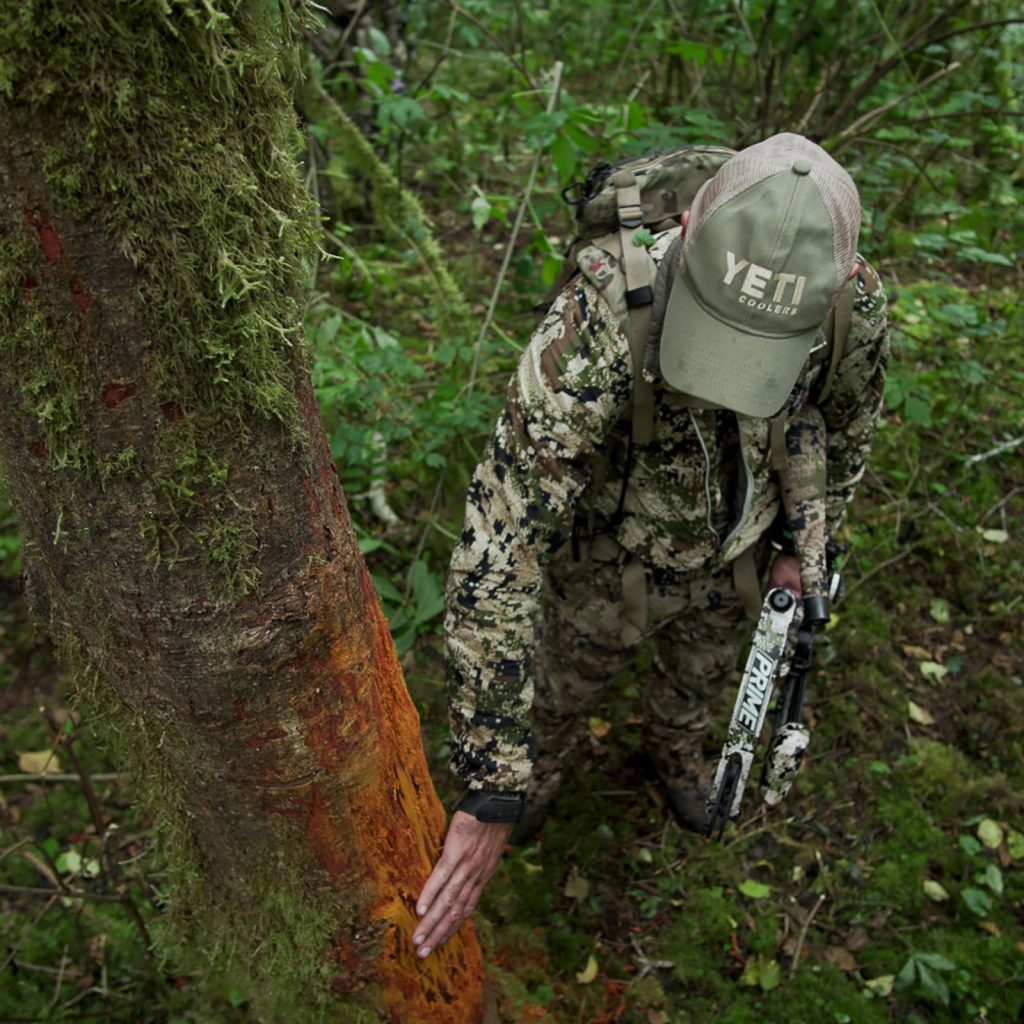
Distinguishing between fresh and old rubs can help determine where the elk are during different times of the rut. The freshest of rubs won’t have any beads of sap on the woody part of the tree. Additionally, the cambium (innermost layer of the bark) will be soft and pliable, and the needles or leaves of the damaged branches will be fresh and not wilted. As the rub ages, the soft cambium will harden and the sap will bead up. The damaged needles and leaves on the branches will be crisp and wilted. By the following year, the sap beads will look as if they have dripped and the bark will be discolored. The shavings at the base of the tree will be crispy, discolored, and covered by fallen debris.
Finding rubs from previous seasons – or super fresh rubs – will help confirm suspicions about elk use in a particular area, and also help you distinguish between pre-rut, peak-rut, and post-rut activities. The size of the rubs can also give you a good idea of the size of bulls in the area. All bulls will thrash smaller saplings, but bigger, mature bulls will also rub larger trees. If you find rubbed trees that are 8-12” in diameter with nicks higher than you can reach, it’s a good possibility there are mature bulls nearby.
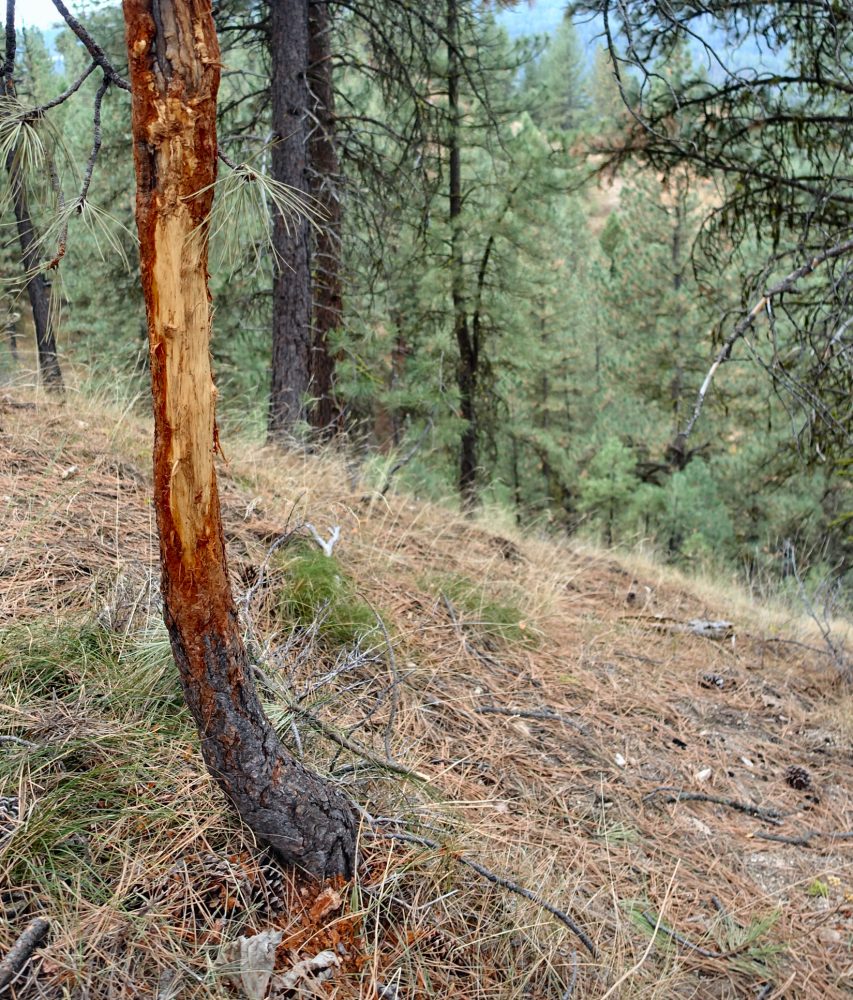
Wallows
In the earlier parts of elk season (August, September, early October), it can be quite warm. Elk – particularly the rutting bulls – will create wallows to splash themselves with water and coat themselves with mud to help cool off.
Elk can turn just about any water source (springs, waterholes, marshes, etc.) into a wallow, and if you find moist, cool areas, there is a good chance there will be an active wallow somewhere nearby if there are elk in the area. If you are finding active wallows, you are in a good location, and bulls will often visit the wallows frequently and regularly.
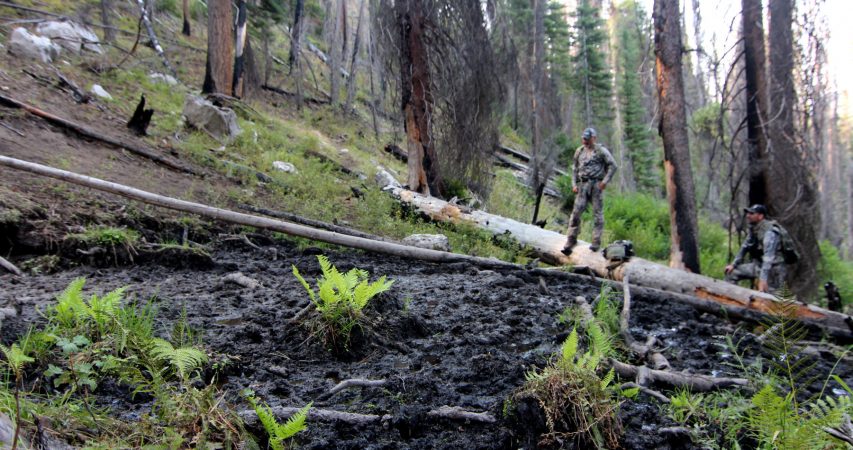
Droppings
Elk droppings (poop) is another great sign that can help determine whether there are currently elk in an area. Fresh droppings will be soft, while older scat will be more firm. Cows and calves typically have more rounded “Milk Dud”-like droppings. The droppings from bulls will often be larger and more “flattened out”.
Smell
Elk Stink. But in a good way… 🙂 There is nothing like the smell of a rutting bull elk, and when you get a strong whiff of one, you know you are getting close. If you get a good whiff of elk, check the wind and see if you can determine what direction the smell is coming from, and what is leaving the smell – a wallow, a bed, or maybe even an actual elk!
All of these “signs” can be incredibly valuable as you try to determine where the elk are. Locating elk can be a lot like finding a needle in a haystack, but by learning habits of elk and reading their sign, you can make the haystack much smaller! From there, it’s simply a matter of employing your tactics to actually locate the elk.
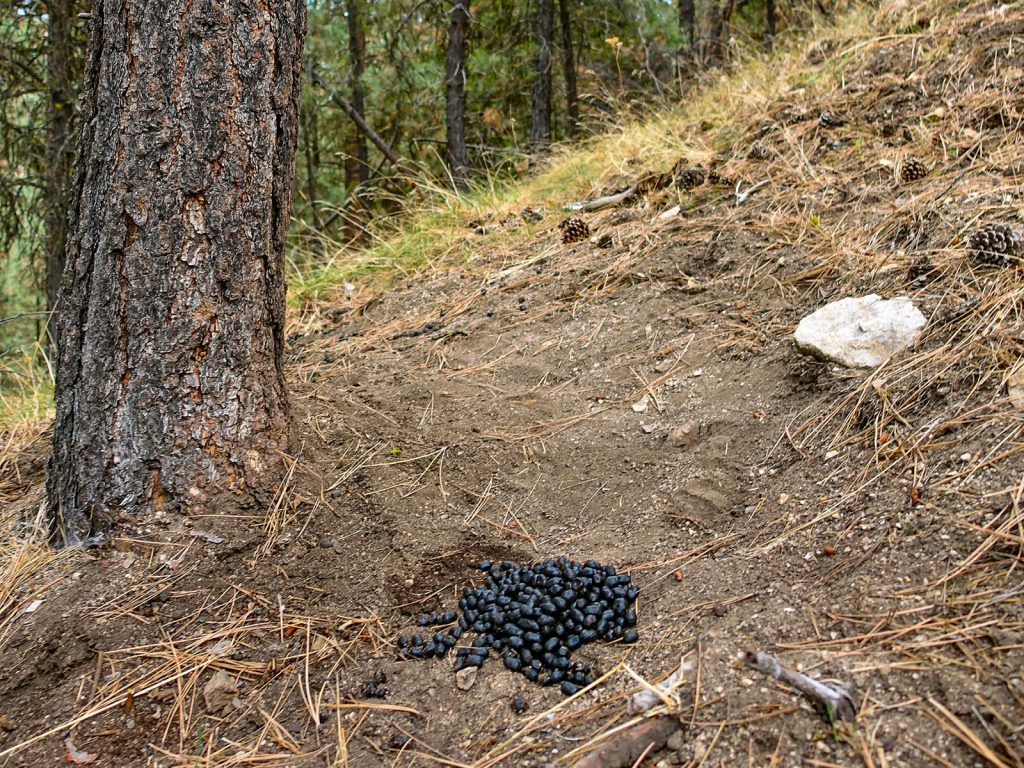
Click ‘Next Chapter’ Below to Continue to Chapter 2: Tactics for Locating Elk





